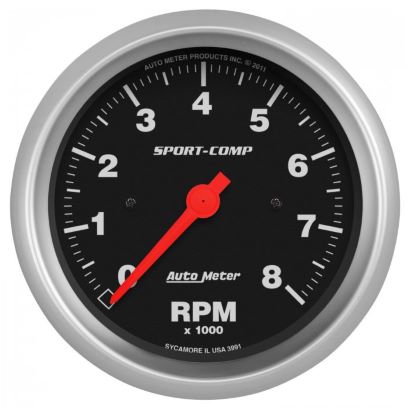The Significance of a Tachometer in Monitoring Engine Rate and Performance in Automotive Applications
In the world of vehicle design, the tachometer stands as a pivotal tool in the vehicle driver's arsenal, offering a straight window right into the inner operations of an automobile's engine. Past its feature as a simple scale of revolutions per minute (RPM), the tachometer serves as a crucial device for fanatics and experts alike, providing real-time insights right into engine performance and health and wellness.
Significance of Checking Engine RPM
Monitoring engine RPM, or transformations per minute, is a critical element of automobile maintenance and efficiency examination. Engine RPM straight correlates with the rate at which the engine's crankshaft rotates, indicating exactly how promptly the engine is running.
Additionally, keeping track of engine RPM is important for efficiency assessment in auto racing and high-performance cars. In recap, monitoring engine RPM is not just crucial for spotting problems but additionally for enhancing engine performance in different automotive applications.

Advantages of Real-Time Data
In automobile applications, real-time information plays an important role in providing immediate insights into the performance and condition of the vehicle. By constantly monitoring numerous parameters such as engine rate, temperature level, gas intake, and extra, real-time data provides many advantages that add to enhanced performance and safety and security when traveling.
One considerable benefit of real-time data is its capability to sharp chauffeurs and specialists to any type of anomalies or issues promptly. This positive strategy enables quick recognition of potential problems, enabling prompt interventions to avoid additional damages or break downs. In addition, real-time data promotes efficiency optimization by giving prompt feedback on driving routines and engine effectiveness. Chauffeurs can adjust their habits in real-time based upon this information to achieve far better gas economic climate and prolong the life expectancy of their vehicle.

In addition, real-time information plays an important duty in contemporary auto diagnostics, making it possible for service technicians to swiftly diagnose and deal with breakdowns. This leads to decreased downtime, reduced maintenance costs, and eventually, enhanced total vehicle reliability and long life (tachometer). By utilizing the power of real-time information, vehicle stakeholders can make informed choices that positively affect both the performance and durability of the car
Influence On Equipment Shifts
The tachometer plays a critical function in enhancing gear shifts by providing real-time engine speed information to the vehicle driver. When coming close check my source to the redline on the tachometer, it signifies the chauffeur to upshift to stop over-revving the engine and triggering prospective damages.
Furthermore, the tachometer help in attaining smoother equipment shifts, especially in manual transmissions. By checking engine rate, vehicle drivers can implement gear shifts at the optimum RPM variety, lowering jerking movements and reducing endure the transmission elements. This precision on duty changes not just improves driving comfort but likewise contributes to fuel performance.
Enhancing Gas Efficiency
Offered the crucial function the tachometer plays in maximizing gear changes for efficiency and engine health, it straight contributes to optimizing gas performance in vehicle applications. By giving real-time feedback on engine rate, the tachometer assists drivers in keeping the most reliable RPM array for gas economic situation. When drivers continually keep an eye on the tachometer and change their driving habits appropriately, they can avoid unnecessary fuel usage triggered by over-revving or hauling the engine.
Moreover, the tachometer assists drivers determine the most fuel-efficient equipment to be in at any kind of given minute, preventing the engine from working tougher than necessary. In final thought, the tachometer offers as an important click reference tool in enhancing gas efficiency by promoting ideal driving routines and determining areas for renovation in the automobile's efficiency.

Maximizing Engine Longevity
The tachometer's function in keeping an eye on engine rate and performance is crucial in making certain the longevity of vehicle engines. By utilizing the tachometer efficiently, motorists can maximize engine long life through conscious RPM monitoring. Constantly revving an engine expensive can cause excessive damage on important elements, such as the pistons, shutoffs, and bearings. Over time, this can cause lowered engine efficiency and potential malfunctions. Monitoring the tachometer allows vehicle drivers to stay within the advised RPM range for their vehicle, stopping unnecessary pressure on the engine and expanding its lifespan.

Verdict
To conclude, the tachometer plays a crucial duty in monitoring engine speed and performance in vehicle applications. By giving real-time data on RPM, it enables reliable equipment changes, boosted fuel effectiveness, and optimized engine longevity. This tool is vital for preserving ideal engine efficiency and ensuring the total performance of an automobile.